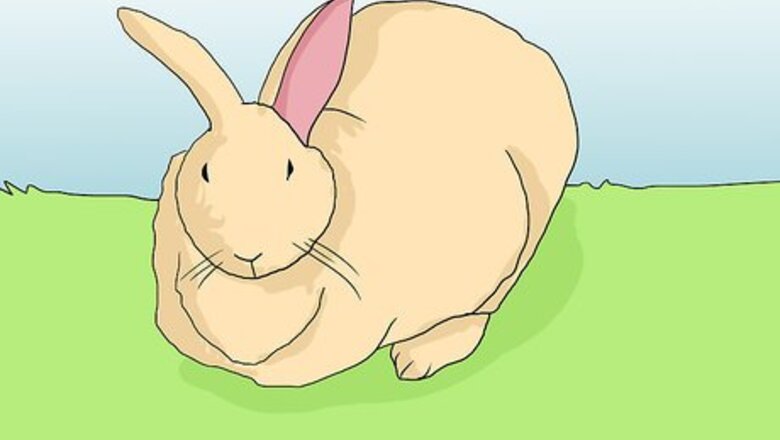
views
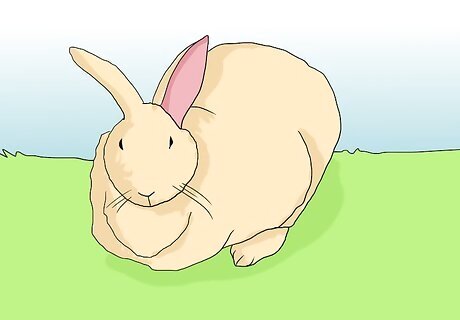
Understand the risks your rabbit can face if it is overweight. Fat rabbits are often lethargic, and are susceptible to heart, liver, and kidney disease. They may suffer from chronic diarrhea, heat stress in hot weather, splayed legs, and arthritis in later years. Obesity can also cause breeding and birthing difficulties.
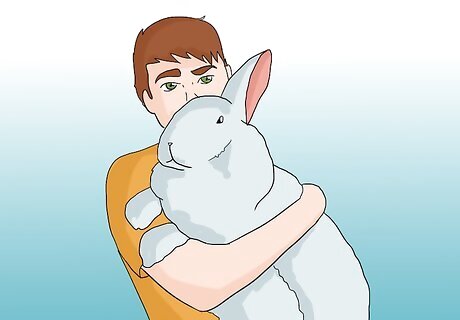
Make sure your rabbit's weight is really indicative of a problem. Some breeds of rabbit are larger than others, but overall size doesn't indicate a weight problem.
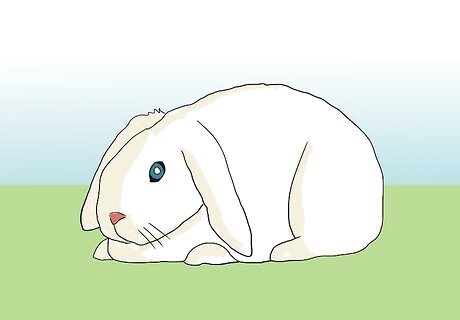
Acknowledge the obvious signs of obesity. If your rabbit obviously has huge rolls of fat and you can't see his feet when he walks, he's probably overweight. However, don't be alarmed if your rabbit has a pocket of fat under its chin. This is called a dewlap. They are very common in females, but males may have them too. Check to see that your rabbit is generally pear-shaped; his head should be smaller than his body, which should be narrow and widen out around his hips when he is sitting down. If your rabbit resembles more of a squishy round blob when he's sitting, he is definitely overweight. There should also be a smooth upward curve between the rabbit's hips and shoulder. Feel for the rabbit's spine. If you can feel it easily, your rabbit is too thin. If you can feel it after pressing a little (gently), your rabbit is healthy. If you can't feel it at all, your rabbit is overweight.
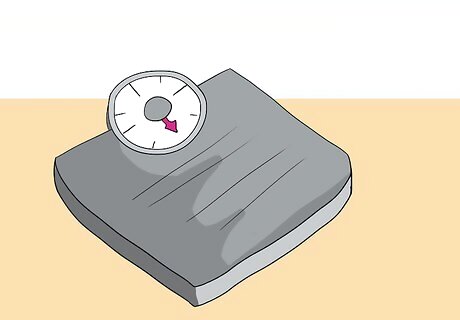
Weigh your rabbit on a scale. If you think you may need to be concerned about your rabbit's health, weigh your rabbit and make sure its weight is in a healthy range for its breed. This may be difficult to do at home, so it might be best to take your rabbit to the vet to be weighed.
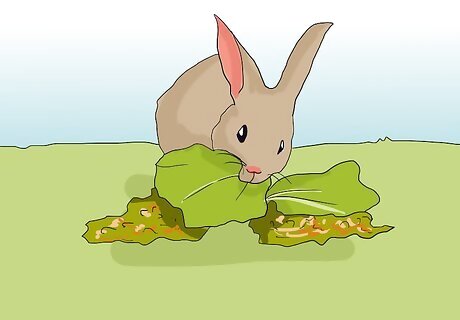
Examine your rabbit's diet to determine what might be causing the dangerous weight gain and adjust accordingly. A healthy adult rabbit's diet should consist of unlimited timothy hay and a reasonable amount of leafy green vegetables. If your rabbit is under a year old, they should be given alfalfa hay, which is high in protein, but it is important that they transition to timothy hay when they're older. Common owner mistakes that contribute to rabbit obesity include over-feeding of pellets, over-feeding of treats, and poor choices of vegetables. Despite contrary belief, pellets should not make up the majority of a rabbit's diet; in fact, some rabbits are just fine without them. If you want to include pellets in your rabbit's diet, make sure to buy timothy-based pellets with 18 to 20 percent fiber and between 14 percent and 16 percent protein. Don't buy pellets that claim to have dried vegetables or other additions, as they are unnecessary and often contribute to weight gain. Also, keep in mind that an adult rabbit only needs 1/4 cup of pellet feed per day per 5 pounds of body weight. Make sure you aren't feeding your rabbit too many treats. It's fun to watch rabbits eat fruits and other treats, but those should only be given in moderation. Rabbits should only eat around 2 ounces of fruit per day per ounce of body weight.
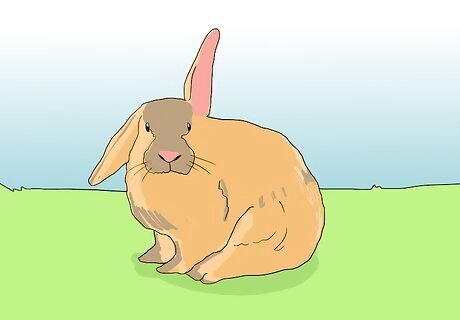
Give your overweight rabbit an opportunity to exercise. If your house has been thoroughly rabbit-proofed, let your rabbit run around a room or the whole house for at least a couple of hours every day. If that isn't practical, buy an indoor dog pen and let them run around in there. Be sure to provide them with toys (or another rabbit, if the two are bonded) to inspire them to play.
















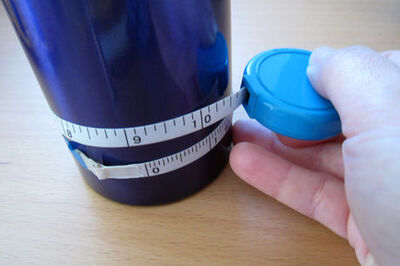
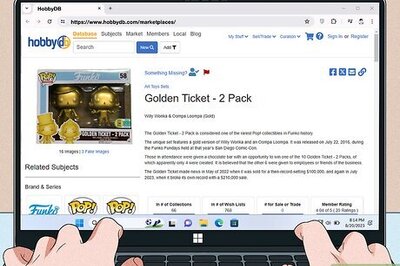
Comments
0 comment